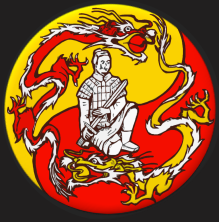The Yangkido's origins
Defensive and offensive martial art, this combat style comes from THANH-LONG (VIET VO DAO), TAI CHI CHUAN (TAI QI QUAN) “style CHEN”, and DA CHENG CHUAN (DA CHENG QUAN) spirit. Several decades practicing with the better masters, several years of intensive work in Vietnam and in China, have allowed me to harmoniously mix these differents disciplines mentionned above. This is how YANGKIDO style was born, and from now integrate on the sino-vietnamese martials arts family.
- YANG : The warrior's attributed fire
- KI : The water's energy, fluidity, displacement and power
- DO : By the Martial Art philosophy leeds on the path
The YANGKIDO style was not created in a competitive way, but for that anyone could face all the perturbating elements of our society. In fact the competition exists, not towards an adversary but against oneself...
Yangkido fondamental principles
The Yangkido, as science, art and technique, is consituted by two fondamental principles : the first one is known under the « soft strength » or « interior strengh » name, the second under the « hard strength » or « exterior strength » name.
The Soft strength
By doing techniques with the soft strength, the pupils use their mental ability and their intelligence. By this way, they manage to control the technique, the concentration and the balance of their bodies musculars and nerves structures, this allows them to act on the adversary without using any violence. They can match their goal by spending only a minimum of their physical strength.To control this soft strength, the practicians follow a well structured program ::
- Work on the breath
- Endurance exercices
- Reinforcement of the aptitude to keep its cold blood, to concentrate and to watch
- Ability to execute quicks and precises movements, positions control
- Work on the body's flexibility to absorb the adversary's hard strength
- « Chen style » Tai Chi Chuan practice
The hard strength
In parallel to this work on the soft strength, with harmony, the practicians use the rough physical strength called hard strength at the practising :
- Quicks and shorts strikes exercices
- Exercices destined to improve the physical strength
- Jumps exercices
- Attacks and defences exercices
- Exercices of physical resistance to strikes
- Endurance exercices
- Exercices on the animal's instinct developpement
By the martial art philosophy
The teaching of those two strengths is accompaned with the martials arts philosophy. The Yangkido is a martial art but also a way of life and meaning, this allows the practicians to reach a high level. It is essential to take it in account. . The Vo Sinh (kung-fu practician) acquires a knowledge on himself, on others and on the nature making him able to control the internals and externals strengths. Without the mind education and an harmony with the nature, it is not possible to access a high level, the technique's control only being not sufficient. In consequence the follower must try to reach this ideal balance between the physicals and mentals strengths by educating his body and his mind in the traditional way teached by his master.
